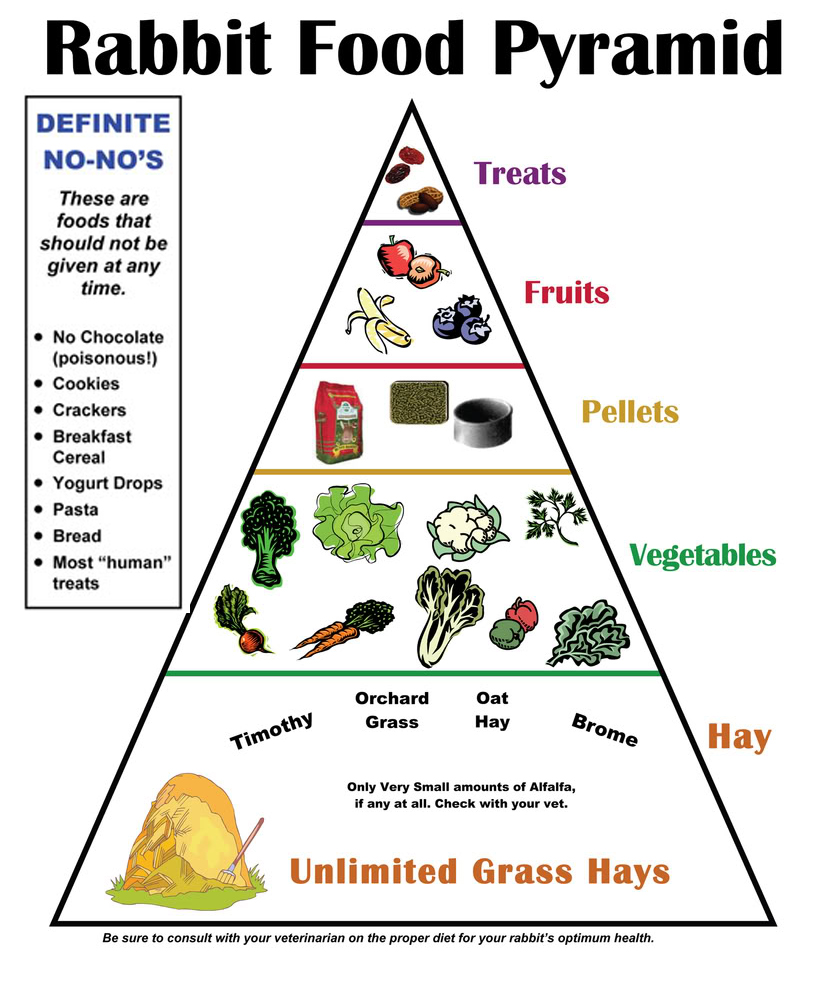
There’s no doubt that rabbits make great pets, says Dr Tash. ‘Many of our clients own rabbits and are amazed by their level of interaction and intelligence. They can be quite inquisitive and friendly, just like dogs and cats. Kids love them, especially the ones that are frightened of bigger animals, so they can make an ideal first pet.’
Feeding rabbits is not difficult but there are important differences between a diet fit for bunny and those for dogs or cats, explains Dr Tash. ‘Rabbits are herbivores and have a very interesting digestive system. They actually pass two different types of faeces, one of which – a soft, black dropping – is immediately eaten. While that sounds pretty unpleasant to you and me, being able to digest their food twice actually allows rabbits to extract sufficient nutrition from a highly fibrous diet. It’s quite clever really. Rabbits also pass hard faecal pellets, which are not consumed.’
Because of their special digestive system, it’s extremely important to feed rabbits lots of fibre and good quality grass or oaten hay should make up about eighty to ninety per cent of their total intake. Owners should look for hay sold in bales, not plastic bags, says Dr Tash. ‘It’s not only fresher but cheaper as well. Be careful not to feed lucerne or clover hay though – these are more palatable grasses but can cause bladder stones due to their high calcium content.’ And beware straw hay, which has no nutritional value, she adds.
Plenty of fresh leafy green vegetables are also a menu-must for bunny. Dr Tash lists Asian greens, celery, coriander, parsley, mint, dandelion leaves, broccoli, cabbage leaves, cauliflower leaves and untreated grass as suitable options. ‘Aim to give one and a half cups per kg of bodyweight daily. Therefore, a three kilo rabbit should get roughly four and a half cups of vegetables each day. Sneaky treats can be the downfall of many a human, and rabbits are not immune either so limit them to special occasions. Examples of rabbit treats are apples, bananas, watermelon, strawberries, tomatoes, capsicum and grapes.’
Dr Tash also advises multi-person households designate one person who is responsible for feeding, especially when it comes to treats. ‘I remember one family who were absolutely mystified as to why Bugs was so overweight,’ she recalls with a fond look on her face. ‘Mum, Dad, and the two kids, all swore they weren’t giving him any treats. But it finally came out that each day mum would give Bugs the tiny amount of fruit that the kids didn’t finish.’
‘And then, one at a time, the kids admitted that they had been giving Bugs most of the fruit that Mum had cut up for them,’ laughs Dr Tash. ‘So it turns out that the kids hadn’t been eating fruit for months – Mum was mortified. She thought they really liked the way she cut fruit.’ Dr Tash happily reports that Bugs is well on the way to finding a slimmer version of himself. ‘Dad’s in charge of feeding now.’
On a more serious note, Dr Tash doesn’t recommend foods such as pellets and rabbit mixes as these cause dental, gut and weight problems. ‘They’re a no-no. Many people don’t realise that these foods are used to fatten up farmed rabbits – obviously, not what we want for our bunnies,’ she exclaims quickly. Other foods that rabbits should not be fed include corn, potato, bread, peas, oats, grains, beans, rhubarb, iceberg lettuce, chocolate, human sweets and cereals.
Anyone seeking further advice about the dos and don’ts of bunny feeding should contact the practice. ‘We’re always happy to have a chat so give us a call. Vaccinations and general check-ups are another great opportunity for owners to ask questions.’

